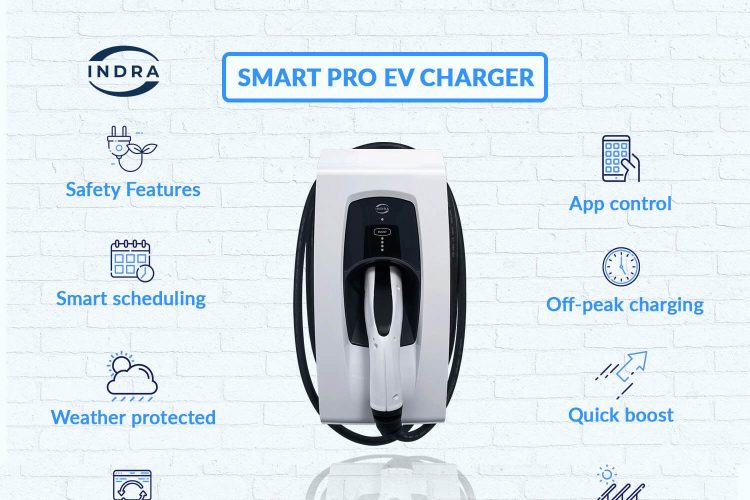
Fleet vehicles account for up to 55% of vehicle sales and leases in the UK. Given this large market share, it is crucial factor in the movement towards electric travel. Often, the rate of adoption of electric vehicles relies most heavily on fleet transformation.
In order to engage with the fleet management market, one must first understand the benchmarks that fleet managers use to make their decisions. The most important of these is Total Cost of Ownership (TCO). Rather than considering only the initial purchase price, fleet managers will also evaluate the running costs, repairs and future sell-on value of the vehicle. Transforming fleets is a challenging process and is unique to every entity. The term ‘fleet’ is in itself very broad, covering anything from golf carts to haulage lorries.
That said, most fleets are also heterogeneous in that they are not comprised solely of one type of vehicle. A single company can have multiple vehicular requirements and so the fleet will be made up of vehicles which each satisfy a specific purpose. Hereafter, we will discuss the challenges faced in the transformation of fleets to electric and offer solutions which can overcome these challenges.

Choice of Vehicle
Inevitably during periods of change, there have been barriers to electrification created by the lack of electric alternatives to existing vehicles. If a fleet has a very technical or niche requirement, the electric equivalent may not yet be available or may need to be bespoke. This requires in-depth knowledge of both the industry in question and the availability of technology on the EV market. Therefore, EV providers must consult with firms and industry experts to understand the design and specifications of existing models and then apply this to their technology. While the new vehicle must perform the required function, it must also be able to do so for a long enough period between charges and perform economically. This can often be achieved using analytics techniques on the existing fleet, using data to understand usage and requirements so that new technology can be customised to satisfy the needs of the client. This research and data gathering can also allow fleet managers to identify the order that vehicles can be transitioned and those for which technology already exists.
Existing Infrastructure
It is vital that companies recognise the need to convert existing infrastructure alongside their fleet. The success of transition will be dependent on the availability of charging facilities, the nature of these facilities and the provisions in place for related expenses. In tandem with the plan for new vehicles, fleet managers must develop a plan for how these vehicles will be charged: maximising charging efficiency using a combination home, public and workplace charging as well as regular and rapid chargers. For this reason, it is important that the fleet manager engages a charging infrastructure supplier as early as possible.
Source of Power
Almost all clients find that electric travel running costs are significantly lower than traditional fuel. However, it does mean that electricity consumption will increase. Companies with larger fleets can see electricity consumption increase by up to a third. In order to avoid capacity issues, local networks may have to be upgraded before new infrastructure is installed. Moreover, the reliance on grid energy can be reduced by adopting smart charging during off-peak times, battery storage and even on-site generation, for example solar panels.
The magnitude of this increase in electricity consumption can often make it worthwhile to negotiate bulk tariffs and reciprocal energy supply agreements with suppliers. Maximising efficiency in energy usage and generation can create competitive advantage, often the biggest upside for electrification.

Capital Investment
As with most business change projects, electrification comes with upfront costs of investment. Electric vehicles on the market are, in general, more expensive than their traditional counterparts and so more money must be invested in the early stages of the project. However, due to lower running costs from cheaper fuel and fewer repairs, they often achieve the same, if not better, TCO. That said, the additional investment in infrastructure must also be considered. As a result, fleet managers must assess the capital outlays and future cost savings over a period of five to 10 years in order to gain a true understanding of the project financials.
Managing the Period of Transition
Most existing fleet management systems are not equipped to handle EV data. Managing a fleet of EVs requires a very different set of data points and so new capabilities must be integrated into existing systems or a new system must be found. Most fleet telematics providers already have, or are developing, new software which can meet the needs of electric fleets. However, it is worthwhile enquiring with your existing provider to understand what they can offer.
Fleets are not only made up of their vehicles, they also depend heavily on the employees who operate these vehicles. As such, it is important to make sure that these staff members are on board with the change and are trained in the new technology. For many, this is a great opportunity to upskill as their industry moves forward. However, some staff members may be resistant. The best way to combat this is to provide them with all the information available and make sure they understand the impact that this change will have on the business.
Change Requires Planning
The process of electrification requires many moving parts to be combined and this can often be an extensive process. As such, a fleet manager cannot achieve this alone and will need all stakeholders to contribute towards the project. Multiple departments will need to work together, and often electric fleets will have even more parties involved than traditional fleets. The earlier these stakeholders can be brought on board the better.
6 Step Plan
Step 1: Self-assessment
Think about whether you or your business are ready for the transition to electric travel. Do you have the funds, or could you source the funds, for this investment? Is the business in a period where it can withstand change? Do you have the staff available to manage this project?
Step 2: Identify the challenges and areas of focus
There will be parts of the business or vehicles in the fleet which lend themselves well to EV adoption, but others won’t. Assessing this will allow you to identify which segments could be tackled first, the easy wins, and which areas will require more time and attention. A natural plan of action will start to emerge, and you will be able to add more detail to this plan as your research the project further.
Step 3: Create a detailed plan
Having built up an overview of business and fleet segments, it is now time to add detail. This should include a coherent roadmap for the project and should be both quantitative and qualitative. Documentation is key as you will rely on this to keep yourself on track and to inform others who become involved in the project.
Step 4: Engage internal stakeholders
Once you have a detailed plan and you have considered all aspects of the project, you will now be equipped to start encouraging others to buy into the project. This is two-fold. Firstly, you must agree the level of cooperation from other employees and departments in implementing the project. Secondly, you must convince the fleet drivers and operators that the project is the correct this to do. Fleet transformation can only succeed if everyone is on board. From experience, this can be the longest step and you must expect to make changes to the plan to satisfy the needs and wants of each stakeholder.
Step 5: Engage external stakeholders
At this point, the business is committed to the project. You will already have consulted external experts during the planning, but you will now be ready to firm up contracts and lock in prices. You will need to arrange financing, vehicle suppliers, charger supplier and installers, an energy supplier, distribution network managers etc. It is vital, as with any project, that you reach out to multiple partners and receive a variety of quotes to get the most favourable terms.
Step 6: Adapt and move forward
Once the project is underway, this does not mean the job is over. There will be barriers to overcome but these should have been identified in the research phase to make the process run smoothly once underway. New vehicles and infrastructure will be phased into the business and you must ensure that normal business operations can continue with minimal disruption.
Fleet transformation can be a complex and difficult process but is a necessary part of futureproofing your business. As technology and customer attitudes continue to change, there is growing pressure on companies to consider their environmental impact. Adopting a new green strategy will give you competitive advantage in your market and will make your business significantly more sustainable. If you are reading this, you have already started step 1. Welcome to the future.






